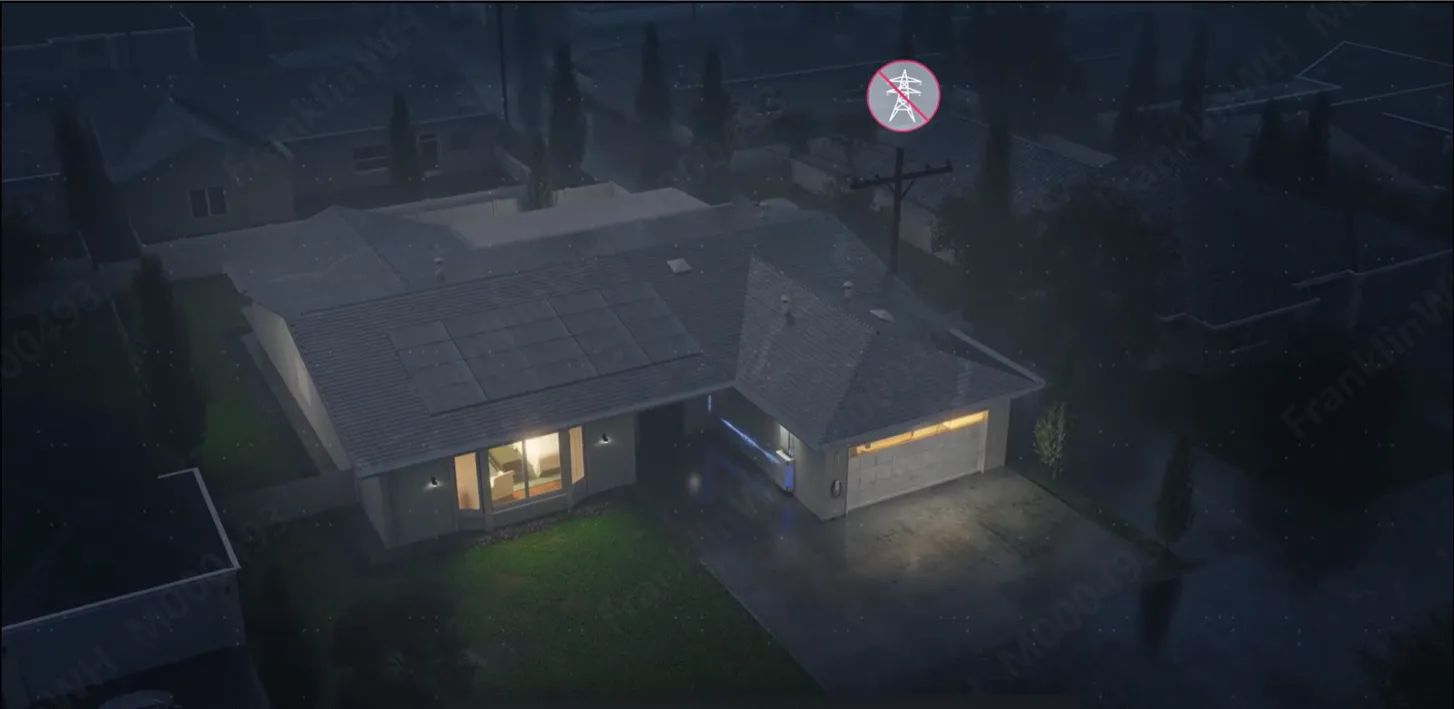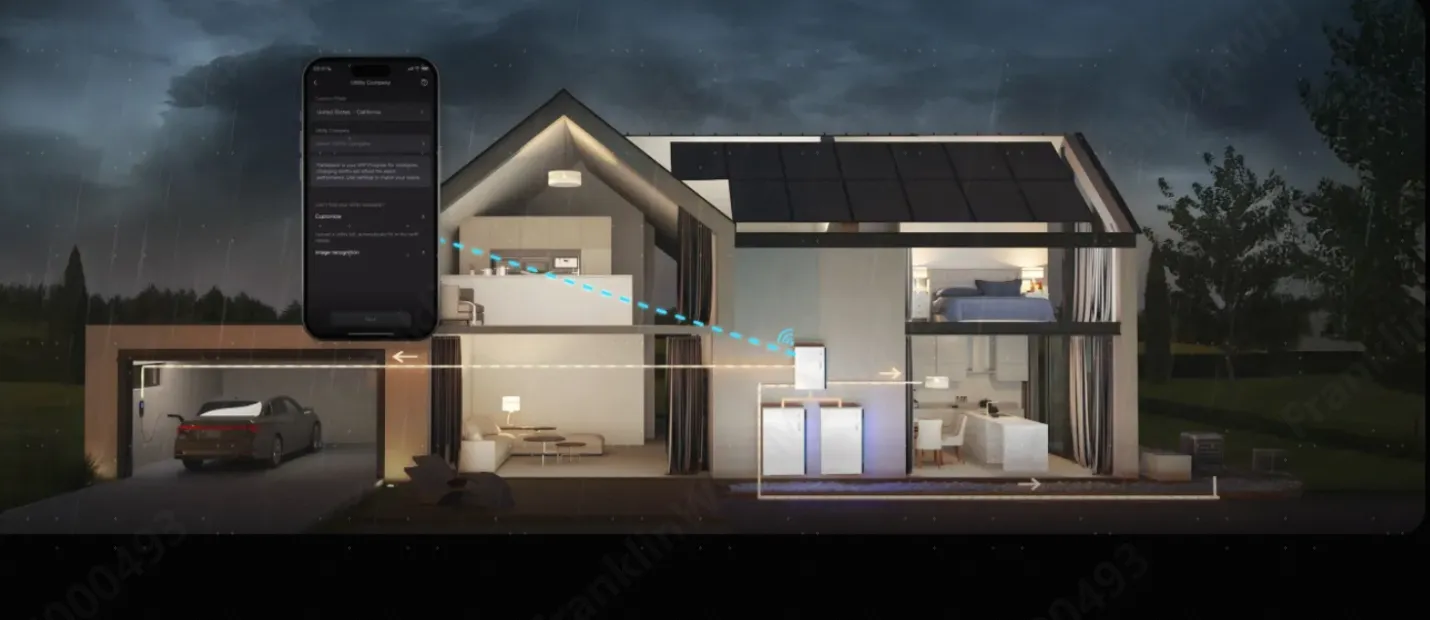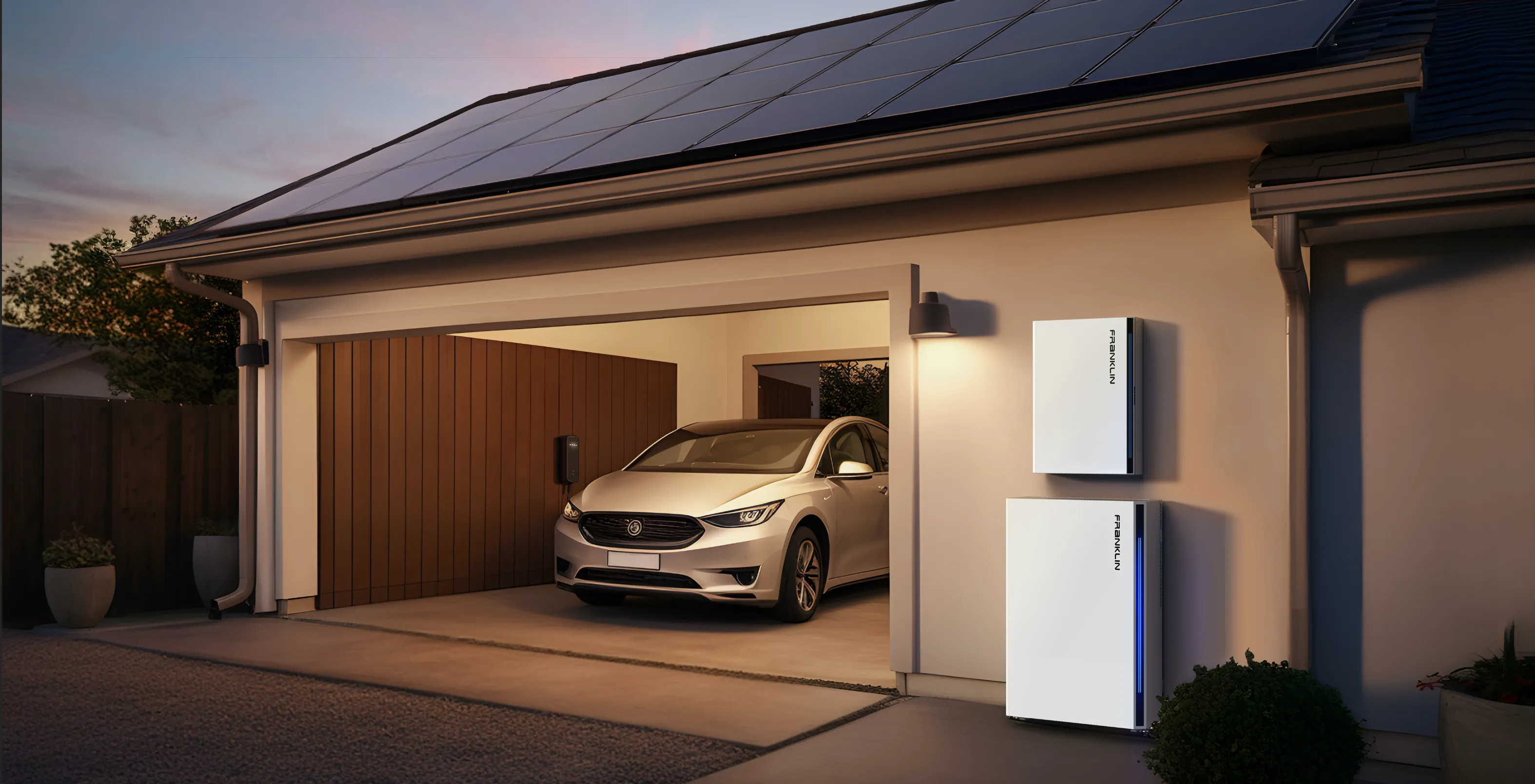As solar adoption accelerates, more and more homeowners are considering a battery storage addition to their existing grid-tied solar configurations, building a complete home energy system that unlocks greater energy control and resiliency. Unlike conventional solar installations, adding a home energy system with battery storage provided many advantages for homeowners to better leverage solar energy production, provide whole-home backup and earn credits from utility companies.
In this article, we'll explore eight key differences between grid-tied solar systems and home energy systems with battery storage, highlighting how solar plus battery storage offer distinct advantages.
1. Energy Storage and Usage
Solar System with Battery
Full home energy systems with solar production and battery storage capture excess energy during sunny hours and store it for future use, be it at night, on overcast days, or during power outages. This capability provides homeowners with the freedom to increase return on their solar investment by not wasting generated energy but using it to offset increasingly pricey utility-provided energy.
Solar System without Battery
In contrast, standard grid-tied solar systems require immediate energy use as it’s being generated. Any excess power is automatically exported to the grid, earning net metering credits where available, which are worth much less per kilowatt-hour than what you pay for buying energy from the grid under today’s net metering policies.
2. Backup Power During Grid Outages
Solar System with Battery
Solar-plus-battery setups offer true backup power when the grid fails, providing essential power protection for your home. Unlike grid-only solar systems, these combined systems can power your home with stored and generated solar energy while disconnecting from the grid to prevent hazardous power back-feed, operating in so called “islanding mode.” This makes them ideal for homes in regions prone to unstable electrical service or frequent blackouts, ensuring uninterrupted power for lights, appliances, and safety systems. The FranklinWH System, for example, can offer advanced whole-home power backup when an outage occurs.
Solar System without Battery
Traditional grid-tied solar systems are designed to automatically shut off during a power outage. This built-in safety feature prevents back-feeding electricity into utility lines and protects utility workers, but it also means your home loses power unless you have additional backup such as battery storage or a generator.

3. Flexibility and Energy Control
Solar System with Battery
Home energy systems with both solar and battery often feature an energy management controller built upon very advanced hardware and software, allowing homeowners to gain full control over energy usage thanks to multiple intelligent operating modes. For example, you can maximize self-consumption by storing midday surplus for later, or switch to time-of-use (TOU) strategies which charge the battery during off-peak hours and discharge during peak times to save money. These systems enable you to schedule power flow, avoiding grid reliance during expensive periods and ensuring your energy use is optimized to the highest efficiency.
The FranklinWH aGate, for instance, features an advanced built-in energy management system (EMS) for intelligent energy control, visible through the FranklinWH App.
Solar System without Battery
By contrast, grid-tied solar without a home battery offers minimal control over when energy is used. All generated solar must be consumed in the moment or sent back to the grid. You cannot store energy for evening use or shift consumption away from expensive TOU periods. While net metering helps, it can't match the financial advantage of battery-equipped systems generated by fully replacing the grid power during peak times.

4.Intelligent Load Management
Solar System with Battery
With an EMS, these systems allow tiered or prioritized load control, particularly useful during outages. The EMS can automatically shed non-critical loads (eg., pool pumps or EV chargers) and prioritize essential appliances (eg., lighting, refrigeration), extending the duration of available backup power. FranklinWH Smart Circuits, managed by the aGate controller, are a typical example of this, individually controlling specific energy-intensive appliances to achieve critical/non-critical load management.
Solar System without Battery
Traditional grid-tied solar systems have no load management capability. They operate only when the grid is active, and shut down entirely during outages for safety. There is no mechanism to prioritize circuits or manage energy use.
5. Environmental Impact
Solar System with Battery
Solar-plus-battery configurations offer higher self-consumption of renewable energy. Using stored solar during on-peak hours helps reduce reliance on grid electricity often generated from fossil fuels and minimizes transmission losses associated with centralized power distribution. While battery production does involve environmental impacts, these are typically offset over a system’s lifetime, especially when batteries are well-maintained and recycled at end-of-life.
Solar System without Battery
Traditional solar-only systems generate clean electricity, but their environmental benefit depends heavily on your region’s energy mix. Excess energy is sent back to the grid, where it may displace fossil fuel generation, but in areas with low-renewable grids, that benefit is limited.
6. Participation in Energy Markets
Solar System with Battery
Solar-plus-battery setups open up access to a broader range of energy programs, such as net metering, virtual power plants (VPPs), and other demand response initiatives. When your home battery is enrolled in a VPP, utilities or energy companies can use your stored energy during peak demand and pay you in return. These systems can also leverage net metering to credit your exports, and can optimize energy discharge during high-rate periods for greater savings.
Solar System without Battery
Grid-only solar systems are typically limited to basic net metering or feed-in tariff programs, which pay you for excess energy sent to the grid. You won’t be eligible for VPP participation, peak-shaving, or other demand response programs. Net-metering benefits can be constrained by state-specific limits or gradually decreasing credit rollover values over time.
7. Upfront Costs
Solar System with Battery
Solar-plus-battery systems come with a higher upfront cost due to added modules and installation workload. However, this investment is strategic rather than sunk. It will be paid back and generate positive returns in only a couple of years through significant savings and earnings.
Solar System without Battery
Non-battery solar setups have a lower initial investment, requiring only panels and a standard inverter. While this makes them an attractive entry point for homeowners on a budget, their long-term savings are more limited, as excess solar is sent back to the grid with minimal control over rates and timing.
8. Long-Term Return on Investment (ROI)
Solar System with Battery
According to industry reports, thanks to various energy-saving strategies and trading programs, the ROI payback period for solar-plus-storage systems can often be reduced to 5–8 years, with savings and income compounding over the system’s lifetime.
Solar System without Battery
Solar-only systems, while less expensive upfront, miss out on key savings opportunities because there’s no storage and time-of-use (TOU) arbitrage to shift consumption away from expensive grid electricity. They rely heavily on feed-in tariffs or net metering credits, which may decline over time, making its payback period longer. As grid electricity rates increasingly rise, these systems may risk offering diminished returns compared to battery-equipped setups.
Final Thoughts
If you’re seeking a more intelligent and seamless home energy experience, with reliable backup power, intelligent energy management, and significant long-term financial returns, a complete home energy system consisting of solar and battery storage is the way to go. The FranklinWH System is the epitome of such intelligent solution that optimizes how you store and use energy and future-proofs your home against rising utility rates and grid uncertainties.




